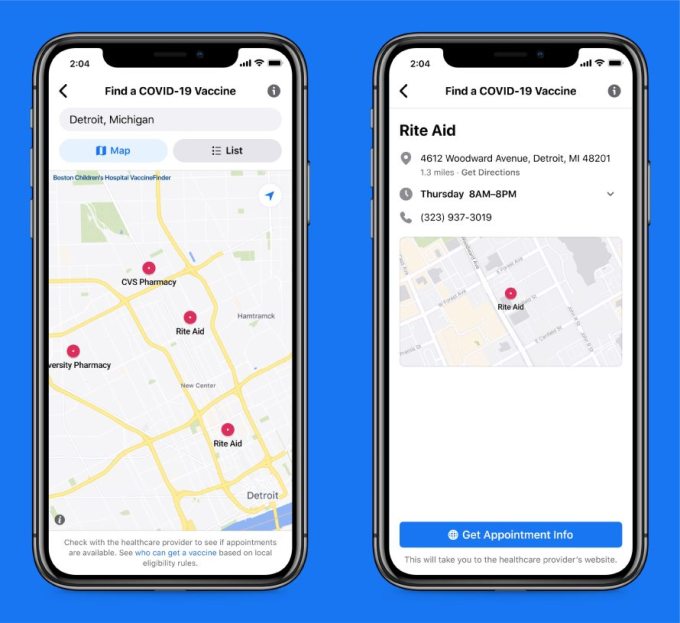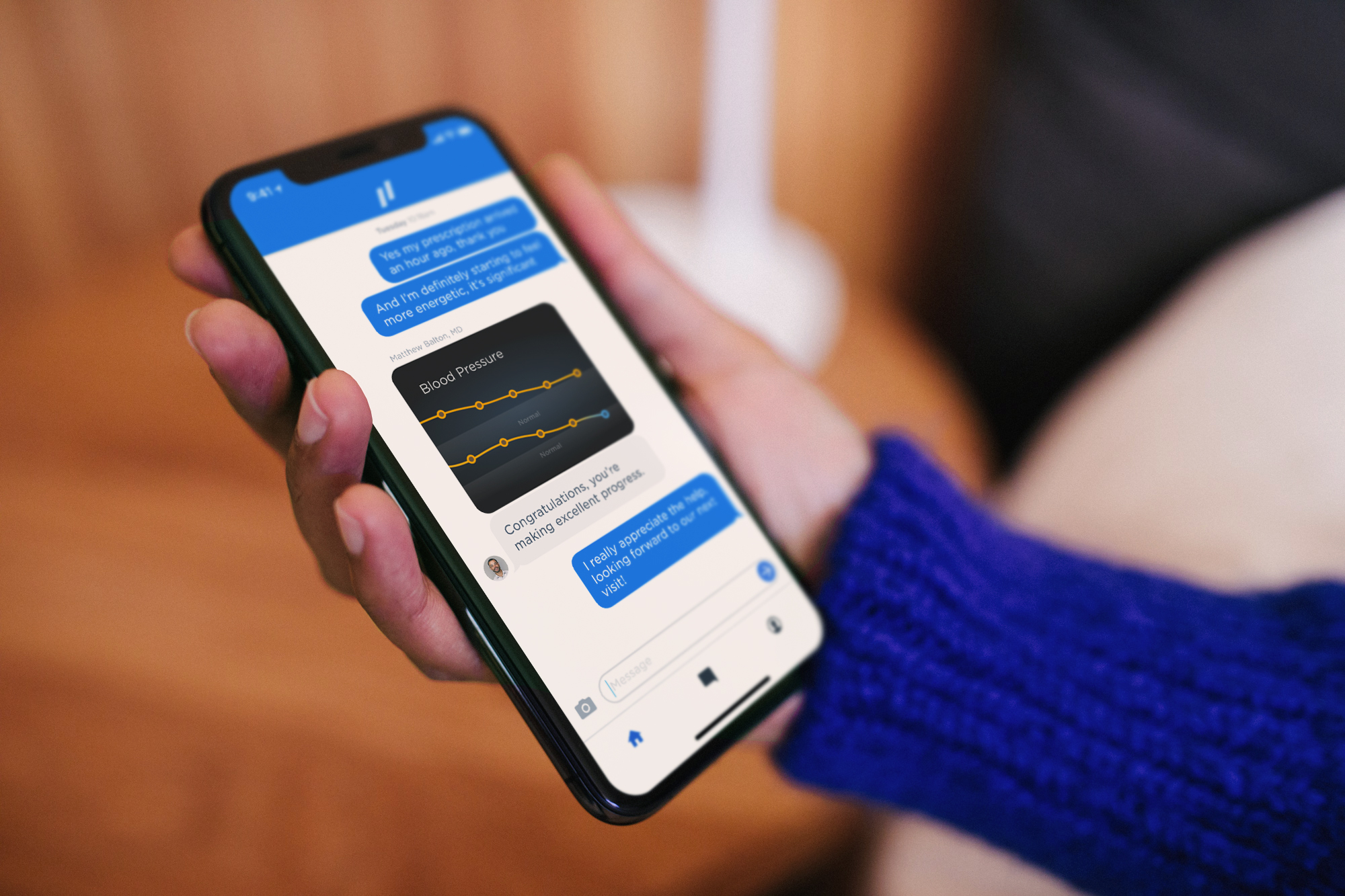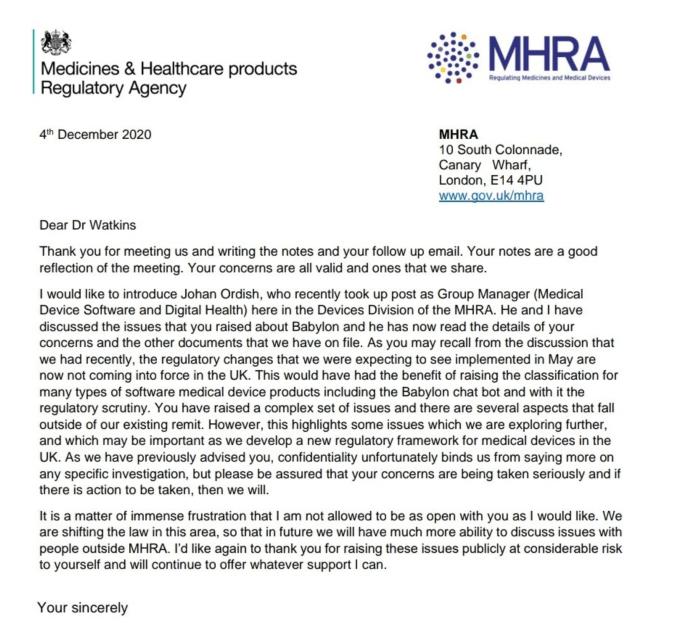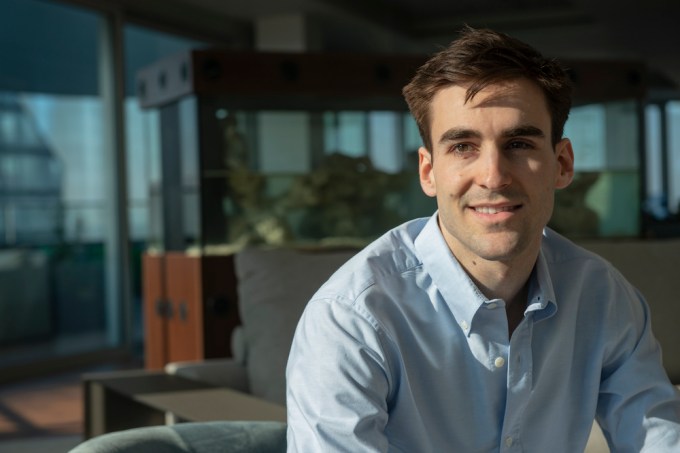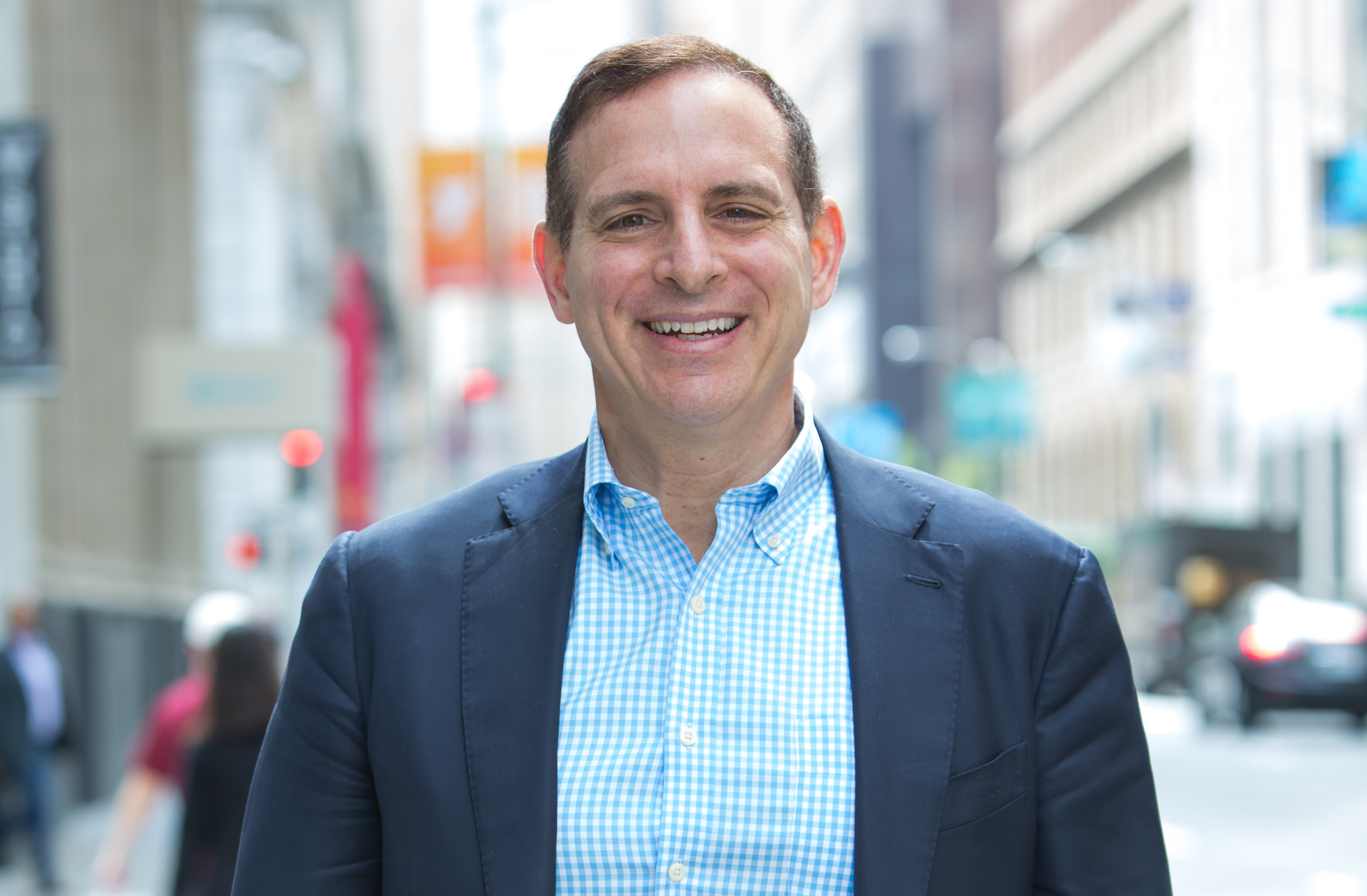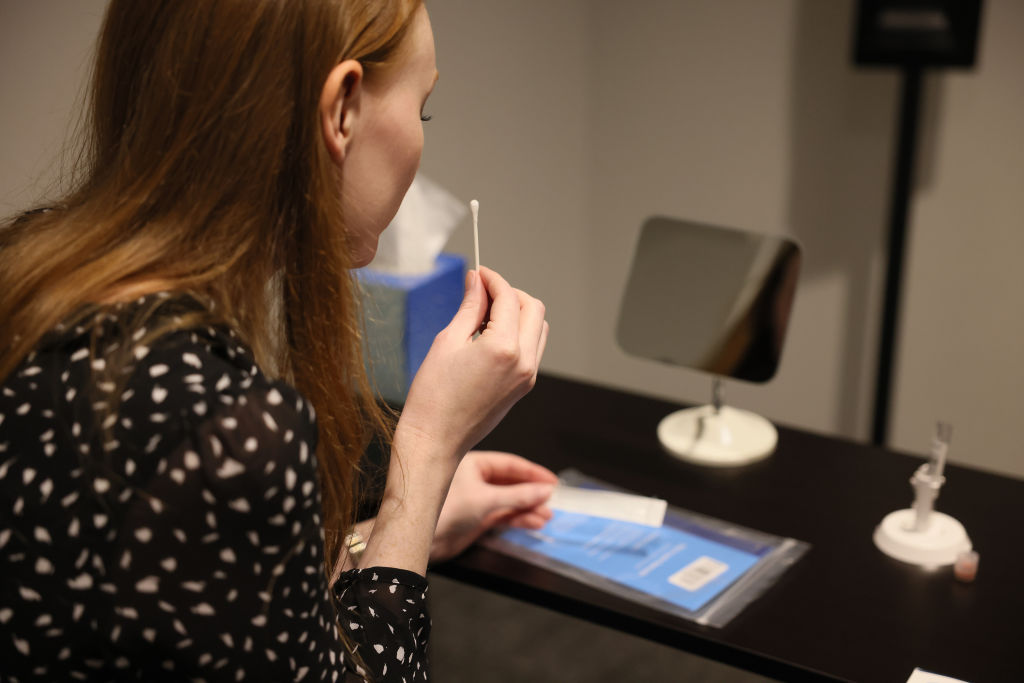Clue, an early pioneer in the femtech category with a well-regarded period-tracking app that’s used by around 13 million people, is getting ready to launch a digital contraceptive which will offer users a statistical prediction of ovulation as a birth control tool.
A US launch of Clue Birth Control is slated for “this year”. The team won’t be more specific on the date yet.
Pricing will be “premium” — but they’re also keeping the exact cost under wraps for now.
The Berlin-based company is today announcing that they’ve gained FDA clearance for the forthcoming product, clearing the way for a US launch in 2021.
Europe is the next region on their launch list but the necessary regulatory clearances mean the roll out will be gradual, going market by market.
The startup has also recently made a number of operational changes — including to the leadership of the company — to reflect becoming a medical-device grade regulated entity in the US.
The short version is that founder and CEO, Ida Tin, has moved up to become chairwoman of the board, while Audrey Tsang (who was leading product) and Carrie Walter (formerly general counsel), are now Clue’s co-CEOs.
TechCrunch chatted to all three women — along with Clue’s chief medical officer, Lynae Brayboy — to get the lowdown on its latest news.
Clue Birth Control
Clue is not the first to market with an app offering a statistical prediction of fertility but unlike first mover, Natural Cycles — which gained FDA clearance back in 2018 — its product, Clue Birth Control, is being billed as “all-digital”; aka it will work without the user needing to take their temperature daily.
There’s also no need to track other bodily changes (such as monitoring cervical fluid). The method is based on women inputting a single data point regularly: The start date of their period.
This means it looks like a major step up in ‘ease of use’ vs the earlier-to-market rival — which Clue has achieved within similar efficacy margins (see below).
Clue’s algorithmic prediction is based on Bayesian modelling — with the app displaying a high risk window across a number of days of the user’s cycle, during which having unprotected intercourse could result in the woman getting pregnant. It shows a window of low risk when the opposite is true.
[gallery ids="2118831,2118832,2118830,2118829,2118828"]
The length of these windows is likely to change as the user inputs more data, with the risk-window starting out longer and typically shrinking as the app becomes more personalized to their individual cycle data.
“Bayesian modelling has been used in medicine for a lot of different applications. What that does is it takes population data and it puts that population data into an algorithm — which is a mathematical model — and [that] basically borrows from what has been found in the population in terms of cycling and ovulation,” explains Brayboy, who was appointed as Clue’s first ever chief medical officer last summer.
“Before we had a fertile window [i.e. displayed in the Clue period-tacking app to illustrate the stages of a cycle] — which is not a reliable, nor is it a tested, model of contraception. So now we’re using a bayesian modelling concept,” she says. “It personalizes over time. So as the individual puts in their cycle day one then we’re able to personalize the window of their high risk days vs their low risk days.
“[The high risk window] will start out long… Usually it’ll be 16 days within the cycle — but it’ll shorten over time. It probably won’t shorten to more than nine days.”
For the product to work as a contraception, users must either abstain from sex on high risk days or use additional protection (such as condoms). That’s why it’s a more involved method than some established birth control alternatives (especially vs an IUD; intrauterine device). On low risk days Clue users are relying on the app’s statistical prediction of their (low) fertility risk to not get pregnant.
Clue says the product has been shown to be 92% effective at preventing unwanted pregnancy under ‘typical use’ and 97% effective under ‘perfect use’ — referencing the standard research terminology for measuring contraception effectiveness (the latter meaning the product is used exactly as instructed every time the woman has sex vs ‘typical’ use which accounts for some usage slip-ups).
What those percentages mean in practice is that under typical use, eight couples out of 100 would be predicted to get pregnant over a year of use of Clue’s digital birth control. While — in the perfect use scenario — the failure rate would be three out of 100 over a year’s use.
(For comparison, Natural Cycles says its product is 93% effective under typical use and 98% effective under perfect use; while — per the Guttmacher Institute‘s US study — the pill is 93% effective under typical use and 99% effective under perfect use; and male condoms are 87% effective under typical use vs 98% effective under perfect use.)
Clue isn’t disclosing how many users it’s expecting to sign up — but the length of time it’s taken to bring the product to market suggests it’s confident Clue Birth Control will find a sustainable user base. (It’s been quietly working on the development since at least 2019 — but will only say the product has been “a long time” in the works when we ask.)
The extra time Clue’s taken to bring its digital contraceptive to market does look like time well spent. The statistical method underlying Clue Birth Control has, for example, undergone rigorous pre-market clinical testing — via a prospective effectiveness trial which reported results back in 2019.
“It’s been in development for a long time because work like this and proving the efficacy of something like this takes a long time,” says Tsang. “From a product perspective as well we want to make sure that these are experiences [that are] easy to understand and that matches the safety and efficacy of this type of product. So that as well.
“It takes a long time to make sure that we develop something that is also usability validated on that front and that we put that out with confidence and with an exact understanding of how well users will understand that.”
The ovulation prediction algorithm was put through a year-long, full-scale, representative (of the US population), independent clinical trial involving more than 700 women. This was conducted by researchers at the Institute for Reproductive Health (IRH) at Georgetown University in partnership with a third company, called Cycle Technologies — using a research app, called DOT (Dynamic Optimal Timing), for the purpose of the trial.
Clue says it acquired the assets of DOT — both the algorithm and the app — in summer 2019 and it’s that clinically validated technology which it’s implementing into its own app now, as Clue Birth Control.
“This was a ‘proper’, full scale clinical trial that was designed to be a clinical trial — rather than put a product out there, see if it works and collect the data,” says Walter. “This was done by academics. We then bought the algorithm and the app and we implemented the features of the app into Clue Birth Control which is a feature of Clue.”
“The clinical trial shows you both what the algorithm does and how the user interacts with the app. Because the algorithm is only part of the story — the main part is can a woman understand what’s going on, track and check and then act on the information,” she adds.
The FDA clearance process for Clue Birth Control involved scrutiny of the efficacy of the algorithm’s statistical predictions and also how Clue presents the information to users. So the whole package has been examined by the regulator. (To be clear the DOT app was not FDA cleared; rather Clue implemented that clinically tested algorithm in its own app and submitted the package for FDA clearance.)
“When you get FDA clearance as a medical device that is for a very specific product — you don’t then get to just take it away and tinker with it,” says Walter. “So I’m sure that there will be further iterations. This is iteration one of a new kind of birth control — but as of right now the thing that is going into our app is the thing that FDA saw and cleared. So the only piece… that we put significant creative work into was making sure that the usability interface is totally user tested and safe.”
Going forward, Clue’s business processes will be subject to ongoing regulatory scrutiny — a considerable switch for the startup that Tin describes as a “huge maturing process”.
“Another big part of the work that happened is to live and be a regulated company,” she tells TechCrunch. “That in itself is a very big change and a huge amount of work… So that’s another thing that has to happen. So one thing is what you put out in the market that users see but as a company you really have to operate in a completely new way — it’s a huge maturing process that we have gone through.”
“It feels like the baby can walk and talk and is actually more like a teenager and now it’s like leaving home — and I say you can do this!” she adds when asked what it feels like to see her femtech startup becoming FDA regulated.
Suitability
No method of contraception — except for abstinence — is 100% effective, of course. But just comparing the varying efficacy percentages of different contraception methods may not be super helpful given how personal birth control choices are.
A digital contraceptive certainly has a bunch of pros and cons that need to be considered. And Clue is being up front that its product is not suitable for everyone.
Top line: Clue says Clue Birth Control is only suitable for women, aged between 18-45, who have regular periods. (It also says: Users must also be able to track their period; check the app each day they have sex; and be prepared to use a condom or avoid sex that may result in pregnancy on high-risk days.)
Clearly there are various additional considerations beyond having a regular cycle that potential users should weigh up before signing up. Not least being comfortable with the stated degree of pregnancy risk.
That’s also true of all FABM (fertility awareness based methods) of birth control — including the old fashioned, non-digital/manual-tracking version (sometimes referred to as the rhythm or calendar method). But app-based products like Natural Cycles and Clue Birth Control are undoubtedly making FABM accessible to more women. Which means that communicating — and even enforcing — suitability is a key component of responsible product development in this category.
This is because the level of commitment and attention to detail required to act on changing fertility information makes FABM more complex than some birth control options. An IUD, for example, works without a woman needing to do anything once it’s been inserted. The pill is also more simplistic — in the sense that it only requires a woman to remember to take a tablet daily.
At the same time, it’s clear that hormonal contraception isn’t for everyone — or may not be accessible to everyone (Brayboy points to rising difficulty for US women specifically to access contraception as a relevant point here, for instance). And the convenience of an app-based form of personalised contraception has quickly convinced a new generation of women to try an alternative. (Natural Cycles’ reported some 1.5 million users worldwide last year.)
App-based convenience can invite missteps too, though. After its launch in Europe in 2017 Natural Cycles quickly attracted criticism over misleading and aggressive social media marketing. It was also investigated in Sweden after a hospital in its home market reported a number of unintended pregnancies from women who had been using the app. Although that probe confirmed the number of pregnancies was within the claimed margin of efficacy Natural Cycles agreed with the regulator to clarify the risk of its product failing.
So how digital birth control is presented is a vital consideration.
Clue doesn’t look like it’s taking any risks with how it communicates suitability for Clue Birth Control — prospective users have to go through an eligibility process which requires them to not just say they’re eligible but demonstrate eligibility by being able to provide key information, including about their own cycle.
If the user can’t show eligibility the app will “boot them out”, as Tsang puts it. She says they’ll also then be locked out for a period of time so they can’t just go back in and try different answers. While users whose cycle becomes too irregular for the product to work properly will similarly be prevented from continued use.
“There is a very detailed assessment process as soon as you try to sign up for Clue Birth Control,” she says. “It asks you a series of questions that really even in the questions themselves and how you answer — it’s like a question with a drop-down underneath it — even in how we’ve set those up it makes it so that users actually have to explicitly say that they are eligible. It’s not a true/false kind of situation. It’s ‘how are old are you’?… We ask these explicit questions so what that does is it actually draws the information out of the user in a way where we can be sure that they are actually eligible to use this feature as it is regulated to be used.”
“That process itself was scrutinized in detail by FDA,” adds Walter. “This is a device that you can use in the privacy of your phone — nobody else has to be involved in it — so it’s really important that that funnel is correct and so that is something that we talked about in a lot of detail.
“And one thing that you do need to be aware of is that you’re not going to be able to answer these questions unless you have some awareness of your cycle going in. Because you’ve got to know is your cycle typically this long or this long. What does your longest cycle look like? What’s your shortest cycle look like over the last 12 months?”
“The [FDA] clearance is related to the product as presented. The product — because it relies purely on one data input and statistical predictions — there’s obviously some level of… ‘irregularity’,” Walter adds. “If your periods are wildly unpredictable this isn’t going to work. What our science team says is… about 70-80% of currently cycling women fall within the bandwidth that could be covered by it.
“It’s 20-40 day cycles and 9 days or less of variation between them. So it’s not like you have to know to the day.”
“We know that it’s impossible to be perfect and so we make sure to tell people that typical use is 92% and so we don’t at all try to oversell ourselves. And that this is better than doing many things which are commonly done by users in the US,” says Brayboy.
“The pill and the IUD have very very defined risks,” she adds. “So we essentially explain that we are not as effective as those methods but our users potentially would have benefits because some of them cannot tolerate those methods for whatever reason.”
“Unfortunately a lot of people do rely on coitus interruptus and a lot of people do rely on condoms which are great but you have to use condoms every single time in order to be effective. And so those individuals might really benefit from having some idea of where they are in their cycle and it’s not only some idea — it’s a rigorously looked at algorithm that they can use in the privacy of their home,” Brayboy goes on.
“It’s really getting difficult… for a lot of American women to actually access birth control. One because of job loss; two because of a recent supreme court ruling in 2020 about opting out of contraceptive coverage. And so this is something they can do in collaboration with their healthcare providers but they don’t have to go out to a pharmacy and hopefully people will see that it’s easy to use. It really is easy to use. You never [don’t] leave your phone at home so you can’t lose this contraception.”
Another major consideration for users of digital contraception is that unprotected sex offers no protection against STDs (sexually transmitted diseases) — rates of which have been increasing in the US in recent years.
Clue therefore recommends its product for women who are in stable relationships — and/or are getting regularly screened, along with their partner/s — i.e. rather than for those who don’t know the sexual history of the people they’re sleeping with.
“It was sort of a premise from the beginning that we only want people to use this product for whom it’s really truly a good product,” says Tin. “It’s like we’re building this product because we think many people will benefit from it and we’ve seen many people needing it and so that’s the core. We want to be helpful. We don’t want people to use it for whom it’s not a good solution. And that’s how we’ve built it.”
Asked who the ‘perfect/ideal’ user for Clue Birth Control, Brayboy puts it like this: “This is someone who — as I envisage as a physician — potentially wants to get pregnant in the next couple of years but is not ready and does not want to use hormonal birth control for whatever reason and is already using condoms.
“So this is someone who wants to not get pregnant just now but is preparing, is planning — and they don’t want something that’s long acting.”
She also points out that many of the most effective methods of contraception (“like the levonorgestrel IUD or the Mirena”, which are ~99.9%) have draw-backs too — in that they have to be placed and removed from the woman’s uterus. They may also, she suggests, have a long term effect on the endometrium.
“So [Clue Birth Control] is something where if you decide okay in the next few years you want to get pregnant you absolutely can stop [following the regime] and you can get pregnant. And you also have a better idea of your cycles at the same time — so it gives you that added benefit,” she adds. “Again, our indication’s 18-45 but a lot of people who are in their late 20s and 30s would be ideal candidates for this.”
Tin also points to the “staggering amount of unwanted pregnancies” in the US and around the world — noting that many women currently still don’t use any birth control, for whatever reason. So an app-based fertility prediction might be an alternative that works for them.
Brayboy notes that unintended pregnancy in the US is about 45% but can be as high as 69% in some ethnic groups, per figures from the American College of OBGYN.
“Unintended pregnancy is also hard to study because people don’t typically plan to become pregnant — and so it makes it difficult. But this [app-based FABM] is a way — also people could really think about how do I want to plan my family in the next couple of years? And so it really is a lovely way for people to start really thinking about becoming parents.”
The marketing for Clue Birth Control will reflect that it’s a “serious choice” people are making to opt for a digital birth control, per Tsang.
“We make sure that people understand that no form of birth control is 100% effective. And that this is a choice — and this is a serious choice that they make,” she says. “In our marketing we plan to help people make that choice — make a choice that’s right for them. And be transparent about the risks and how it works and what it means.”
“I would say that we don’t have huge plans to do social media and influencer marketing,” she adds. “But again we do have these standard operating procedures that make sure that we both speak about the labelling, we speak about our product in a way that reflects exactly what it is.”
Retooling to be regulated
The aforementioned changes to Clue’s leadership team are coupled with a wider retooling of its internal processes — reflective of its new status as a regulated company.
“Something that a lot of people aren’t aware of is that to be allowed to have a medical device on the market you have to operate a quality management system that covers your entire company. And as you know if you cover tech startups that’s not how tech startups tend to work!” says Walter.
“Which is why it’s incredibly important if you’re going to use an app to make important life decisions about your health you want to make sure they’re building their product in a quality controlled way. And of course any app that you find out there on the market that is not a regulated medical device pretty much 100% will not be working in this way. And so one of the things that we had to do — and that we will be audited for once we have the product in the market — is to show that all of our processes, from design over software development, testing, user testing, all of these things are quality controlled every step of the way. So that’s the big change that we’ve gone through in the last two years.”
“It’s a really big change,” adds Tin. “And for us it’s been important to get the team along in a really good way — not lose who we are. We think of it as acquiring a new ninja skill — something new that we’re learning to do that we’re adding to who we are — so that we can still be user focused and maintain all the qualities that we care about and always have cared about but now doing it sort of at a higher level under this quality management system.
“I think it’s very well aligned with who we are because essentially a quality management system’s about quality and risk and care, essentially, for users — and we feel a lot of responsibility putting out a product that help people navigate really big, important things, like getting pregnant, not getting pregnant, so we feel good about making sure that our processes match that level of responsibility. So in that way it’s been easy to get the team along but I will say it’s been a huge amount of work.
“I don’t know how many thousands of pages of technical documentation that we have submitted etc. It’s really like a huge rehaul. So the fact that we can maintain still feeling like Clue while operating in a very new way I’m pretty happy about. Because we could also become very boring — big, corporate-ish — but that isn’t who we are and that’s important because of course we want to keep caring about users.”
For all the extra paperwork, Tsang says Clue’s mission as a company hasn’t — and isn’t — changing.
“It’s just very value-aligned. We’re here to put something out that’s high quality and where we have a clear procedure and clear processes for evaluating risk and mitigating risk. And that’s all completely values aligned with being a femtech company that empowers women to make healthy choices,” she says.
“Nobody is going to go out there and say well we play fast and loose with people’s health. Nobody wants to do that but it helps to have a third party watch you — and that’s what it means to be a regulated company. It means that there are democratically accountable government institutions looking over your shoulder and checking,” adds Walter.
“And I think if you’re looking at some of the criticism that femtech has come into recently — legitimately — because there are all kinds of apps out there that are completely unregulated, no one knows where they’re coming from, no one knows what their business models are, no one knows what they’re really doing. And this is a strong move in the opposite direction.
“We take the constraints that flow from that seriously… As Ida says we’re going to try not to lose our fun in the process.”
The team does also see wider opportunities flowing from being a regulated entity.
“I think this broadens our mission too,” says Brayboy. “Period tracking is really important in overall health but I think this allows individuals to use FABM in a modern way — and FABM itself can help individuals take in things in their cycles that might actually affect their fertility long term and also some diagnosis that might be important to speak with their physician about early, so they present to care early. So we hope to have that partnership with users and their healthcare providers.”
“We don’t have plans to do [comparative studies with other types of contraception] but what I’d like to say is that we have a post-market surveillance plan and we’ll be doing studies with collaborators — we’ve already started to collaborate with academia before Clue Birth Control came out so it’s something that we’ll continue to do,” she also says. “What we’ll be doing in future is we’ll be going to clinical meetings, and presenting and allowing people to collaborate with us. And I think that’s really important that our doors are open for physician scientists and scientists and contraceptive researchers to continue to look at us. And we want to do that because we’re all about science — we’re based on science. And I came to Clue because of that mission.”
“For us it’s also an ability to keep doing more and more advanced things with the data, if you like,” adds Tin. “Which of course is important because people have many needs that if you are to answer them it has to be regulated. It’s right that they’re regulated. Now we learn how to operate as a regulated company — we are operating as a regulated company — that gives us an ability to keep meeting these needs that are deeper.”
Walter also emphasizes the competitive advantage of being a consumer app that’s subject to regulatory surveillance as a medical device — in a sea of unregulated apps.
“A really important thing is that if you look at your average health and fitness app or whatever, their main KPI is let’s get a tonne of users through the door and make money off them. And I’m not going to say we don’t want a tonne of users through the door and to be profitable — we do want that. But because we are regulated we also have this post-market surveillance obligation that we will be audited on. That’s a KPI now. That’s not a nice to have. And I think that’s a big difference. And that’s something that consumers should think about when they’re using an app — like what KPIs are those people working to.
“And you might want to ask yourself what other apps is that developer putting out? Do they have 15 gaming apps and one period tracker? And what’s their business model?”
“And who’s leading the company,” Brayboy chips in. “Look around this Zoom room you can see that we have all potentially had periods and continue to have them and so have had to make these decisions and so I think it puts us in a very unique position because we have a level of empathy and understanding that really comes from a personal space.
“And I wanted to say on the global health [potential] — I’m really excited about that. And that’s another of the reasons why I joined the company because I started my career in the Republic of Mali in West Africa and I saw how difficult it was for individuals to get contraception and a lot of things that are culturally pushed to people in those areas. And so this to me really represents an exciting prospect… I think there’s just limitless possibilities in other countries — we haven’t really thought about the cultural practices and the tendencies that people want to use something that is hormone free.”
Asked about the new co-CEO structure, Tin says it’s a natural continuation of the collaborative leadership style she encouraged at Clue.
“The big two things that Clue is going to care about is being a regulated company and building a sustainable business and I could’t think of two better people than Carrie and Audrey to mind these two parts of the business… We have had a very collaborative leadership style at Clue, always, because that’s how I like doing things — and it feels again also like an upgrade. Now two people get to do this in a pair and I think that’s a really great reflection of what I think is the future of leadership. So on that level it’s also an expression of who we are to choose to have co-CEOs.”
“We’re new at this but it’s been really fun the last couple of weeks but at the heart of it are these values of being disciplined about being transparent,” adds Tsang. “Being collaborative and being equal. And it allows us to hold each other accountable for all of those things which are at at the heart of Clue’s values. So I completely agree with Ida — I’d love to see more leadership look like this moving forward and I personally have been enjoying it quite a bit.”
“Who needs another ‘hero CEO’,” adds Walter. “My starting point was that every conversation I have is actually better when Audrey’s in it — so let’s make my head conversations that way. Let’s upgrade the thinking process to a dialogue. And I think once you accept that most decisions are better made in some form of collaboration — let’s get real, right; we’re not that much of a genius that all of us don’t ever need to talk to other people — so once we accept that then the only question is how do you collaborate?
“As Ida said, we’ve always had a pretty collaborative management team but actually we found that — it’s like in the arts. Where are the most productive, most creative collaborations — they’re in really tight micro teams. And so let’s put that at the heart. And of course there’s a management team and of course there are other expertise and having Lynae in the company is wonderful and having the science component, and data science component, and all of this expertise, but I really like this generative heart of two. This dialogue as being the decision making process. There’s no reason to me why that wouldn’t make us more bold and more thoughtful.”
“I want to second this and maybe it’s also worth saying that I founded Clue together with a bunch of great guys — one of them my life partner, and in a way we have, for many years, also been a very closed pair,” adds Tin. “And working on understanding equality and living from that place and now it’s, in a way, just an even more clear part of the structure. It’s like a good next step on something we’ve been learning about — basically since the beginning of Clue.”

